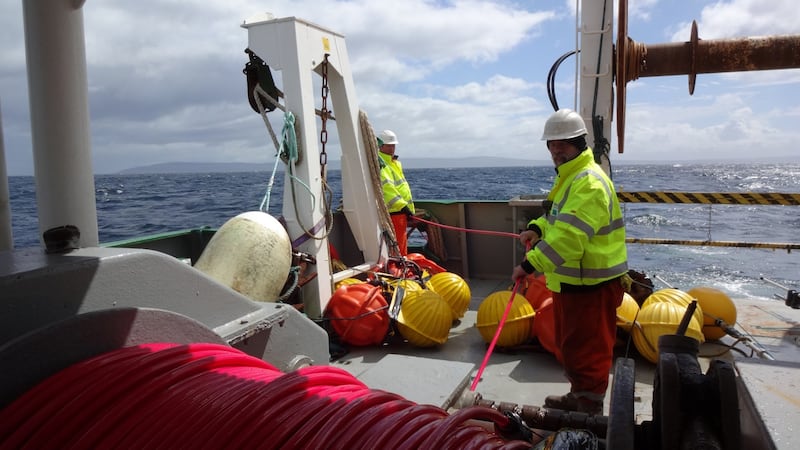We may have lost Fungi but new research reveals has Ireland has an abundance of sperm whales living off its shores.
There is an estimated population of 380 sperm whales in waters deeper than 300 metres off Ireland's western shores, according to a new study by Scotland-based Sea Mammal Research Unit Consulting (SMRU Consulting) and Galway-Mayo Institute of Technology (GMIT).
Researchers from the study, which was recently published in the Journal of Cetacean Research and Management, spent 45 days at sea, covering 120,000 square kilometres and acoustically detecting the whale species’ sound.


Dr Simon Berrow of GMIT said the study used an underwater microphone, known as a hydrophone, to count the number of sperm whales, creating the first ever abundance estimate for offshore Ireland.

The deep-diving nature of the whales means they can spend nearly an hour at depths in excess of 300 metres, with only short periods at the surface, resulting in them being difficult to see.
“The distinctive echo-location clicks of sperm whales are thought to be the most powerful vocalizations produced by any animal and can be heard over many tens of kilometres and this unique acoustic characteristic allowed the sperm whales to be counted by sound alone,” he said.
Each whale was pinpointed by comparing the exact time that each click arrived at each hydrophone in the array and then triangulating bearings from sequential clicks over extended encounters.
The results revealed that sperm whales occurred at densities as high as 4.2 whales per 1000 squared kilometres in some regions and that they seem to prefer seabed areas that sloped to the northwest, such as the Erris and Rockall Basins.
There was a dense concentration of sperm whales in the South Brona Basin canyon system, which is around 350km west of Co Kerry, the study found, while few whales were detected off the southwest slopes.

Dr Jonathan Gordon of SMRU Consulting and lead author, who has pioneered acoustic methods to study of sperm whales since the 1980s, said sperm whales, like many deep diving mammals, were "once extremely difficult to study as live animals at sea".
“ Now, however, with deep sea listening equipment and highly automated analyses software, the location and behaviour of these giants of our seas are no longer hidden from us,” he said.








